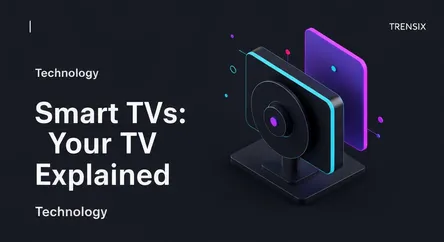Technology
Smart TVs: Your TV Explained

Discover Smart TVs, internet-connected televisions that stream content directly. Learn why they've become the centerpiece of modern home entertainment.
What is it?
A Smart TV is a television set with integrated internet connectivity and interactive Web 2.0 features. Unlike traditional TVs, which only receive broadcast signals, a Smart TV can connect to the internet via Wi-Fi or an Ethernet cable. This allows it to run a variety of applications, similar to a smartphone or computer. Users can stream movies and shows from services like Netflix, Hulu, and YouTube, browse the web, play games, and access social media platforms directly on their television screen, often using a dedicated operating system like Android TV, Tizen, or webOS.
Why is it trending?
Smart TVs are trending because they have become the standard for modern home entertainment. The massive shift from traditional cable to on-demand streaming services is the primary driver. Consumers want instant access to a vast library of content, and Smart TVs provide an all-in-one solution without the need for external devices like a Roku or Apple TV. Continuous improvements in display technology, such as 4K and 8K resolution, and falling prices have made them more accessible and appealing to a wider audience.
How does it affect people?
Smart TVs have fundamentally changed how people consume media, moving them from passive viewers of scheduled programming to active consumers who choose what to watch and when. This has simplified the home entertainment setup, centralizing content access into a single, user-friendly interface. However, it also introduces new considerations, such as data privacy, as Smart TVs can collect viewing habits and personal information. This connectivity transforms the television from a simple display into an interactive hub for the entire household, integrating entertainment, information, and communication.